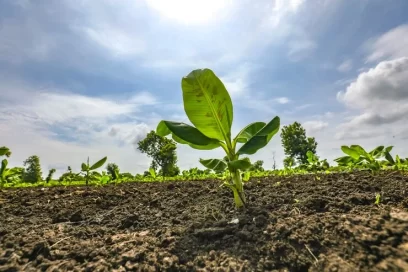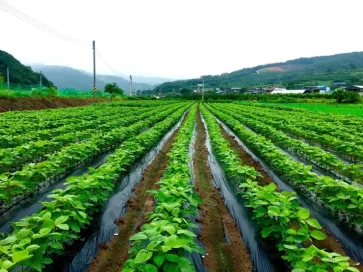Healthy soil is the cornerstone of sustainable agriculture, directly impacting crop yields, environmental quality, and the overall productivity of farming systems. Agrosahas International PVT LTD is dedicated to promoting soil health through innovative and sustainable practices. This blog explores the importance of healthy soil, various techniques to improve soil health, and the tools Agrosahas employs to support farmers in maintaining fertile and productive land.
The Importance of Healthy Soil for Crop Yields
Healthy soil is rich in nutrients, has a balanced pH, good structure, and is teeming with beneficial microorganisms. It supports robust plant growth, improves water retention, and reduces erosion. Healthy soil also plays a vital role in sequestering carbon, thus mitigating climate change. For farmers, maintaining soil health translates to higher crop yields, better quality produce, and long-term agricultural sustainability.
How Can We Improve the Health of Soil?
Improving soil health involves a combination of practices aimed at enhancing soil structure, fertility, and biological activity. Here are some key methods:
- Organic Amendments: Adding organic matter such as compost, manure, and crop residues improves soil structure, increases nutrient content, and promotes microbial activity.
- Cover Cropping: Growing cover crops like legumes and grasses helps protect the soil from erosion, enhances organic matter, and fixes nitrogen in the soil.
- Reduced Tillage: Minimizing soil disturbance helps maintain soil structure, reduces erosion, and preserves organic matter.
- Crop Rotation: Alternating different crops in a sequence improves soil fertility, reduces pest and disease buildup, and enhances biodiversity.
- Agroforestry: Integrating trees into agricultural landscapes provides shade, reduces wind erosion, and adds organic matter to the soil through leaf litter.

What are the Methods of Improving Soil?
Agrosahas promotes several methods to improve soil health, including:
- Composting: This process converts organic waste into valuable humus, enriching the soil with nutrients and improving its structure.
- Mulching: Applying organic or inorganic mulch covers the soil, conserving moisture, suppressing weeds, and adding organic matter as it decomposes.
- Biofertilizers: Using microorganisms like nitrogen-fixing bacteria and mycorrhizal fungi to enhance nutrient availability and promote plant growth.
- Green Manuring: Growing specific plants and then plowing them into the soil to increase organic matter and nutrient content.
Which Agricultural Techniques Can Best Maintain Soil Fertility?
Maintaining soil fertility is essential for sustained agricultural productivity. Some of the best techniques include:
- Nutrient Management: Regular soil testing to determine nutrient levels and applying fertilizers accordingly to avoid overuse or deficiency.
- Legume Integration: Planting legumes that fix atmospheric nitrogen, thereby enriching the soil and reducing the need for synthetic fertilizers.
- Balanced Fertilization: Using a mix of organic and inorganic fertilizers to provide a balanced nutrient supply.
- Phosphorus Management: Applying rock phosphate or bone meal to replenish phosphorus, which is vital for root development and overall plant health.
Which Practices Help in Improving the Quality of Soil?
Improving soil quality involves enhancing its physical, chemical, and biological properties. Key practices include:
- Soil Testing and Monitoring: Regular testing helps understand soil health and guides appropriate interventions to correct imbalances.
- Water Management: Efficient irrigation techniques like drip irrigation minimize water usage and prevent soil erosion and salinization.
- Biological Soil Treatments: Using biochar and compost tea to enhance microbial activity and nutrient availability.
What Other Methods Can Be Used to Improve Soil Structure?
Improving soil structure is crucial for root growth, water infiltration, and overall soil health. Additional methods include:
- Gypsum Application: Adding gypsum to soil helps improve its structure by reducing compaction and increasing aeration.
- Deep Rooting Crops: Planting deep-rooting crops like alfalfa and radishes that break up compacted soil layers and enhance aeration.
- Reduced Chemical Use: Minimizing the use of pesticides and herbicides to preserve soil biodiversity and maintain its natural structure.

Agrosahas’ Role in Promoting Soil Health
Agrosahas is committed to supporting farmers with the knowledge, tools, and resources needed to improve soil health. Their initiatives include:
- Training and Education: Conducting workshops and field demonstrations to teach farmers about sustainable soil management practices.
- Resource Provision: Supplying farmers with organic fertilizers, compost, and other soil amendments.
- Research and Development: Continuously researching new soil improvement techniques and sharing findings with the farming community.
- Community Engagement: Working with local communities to implement soil conservation projects and promote best practices.
Success Stories from Agrosahas Programs
Several farmers working with Agrosahas have reported significant improvements in soil health and crop yields. For instance, the introduction of composting and cover cropping in one community led to a 30% increase in maize yields within two years. Another success story involves a farmer who adopted agroforestry practices and saw a substantial reduction in soil erosion and increased organic matter in the soil.
Conclusion
Improving soil health is fundamental to sustainable agriculture and long-term food security. Agrosahas International PVT LTD is at the forefront of promoting eco-friendly soil management practices that enhance fertility, structure, and overall productivity. By adopting these practices, farmers can achieve higher yields, better quality produce, and contribute to environmental conservation. As we look to the future, maintaining healthy soil will remain a cornerstone of sustainable agricultural development, ensuring that we can feed the growing population while protecting our natural resources.




